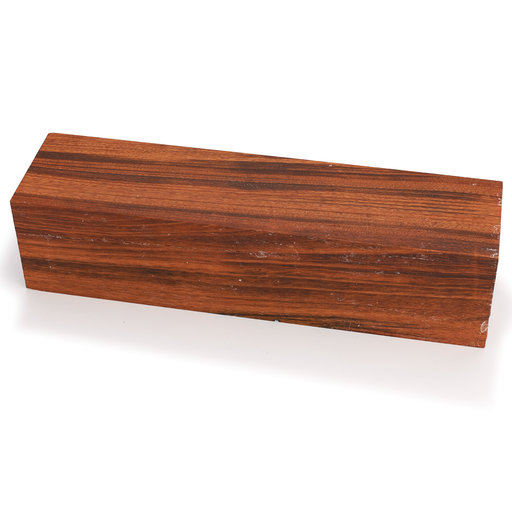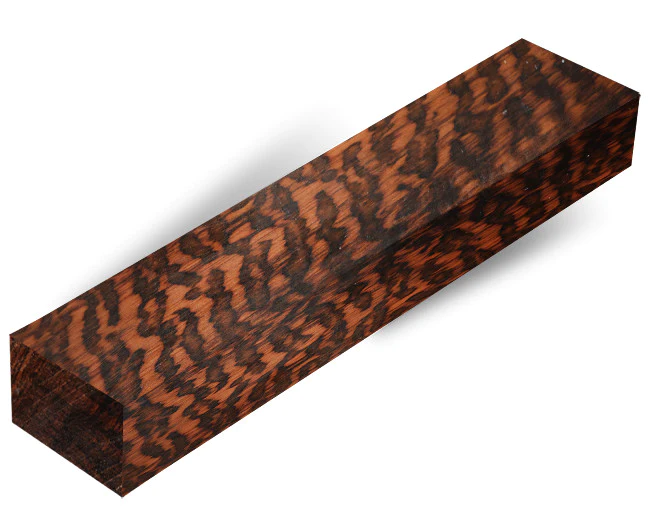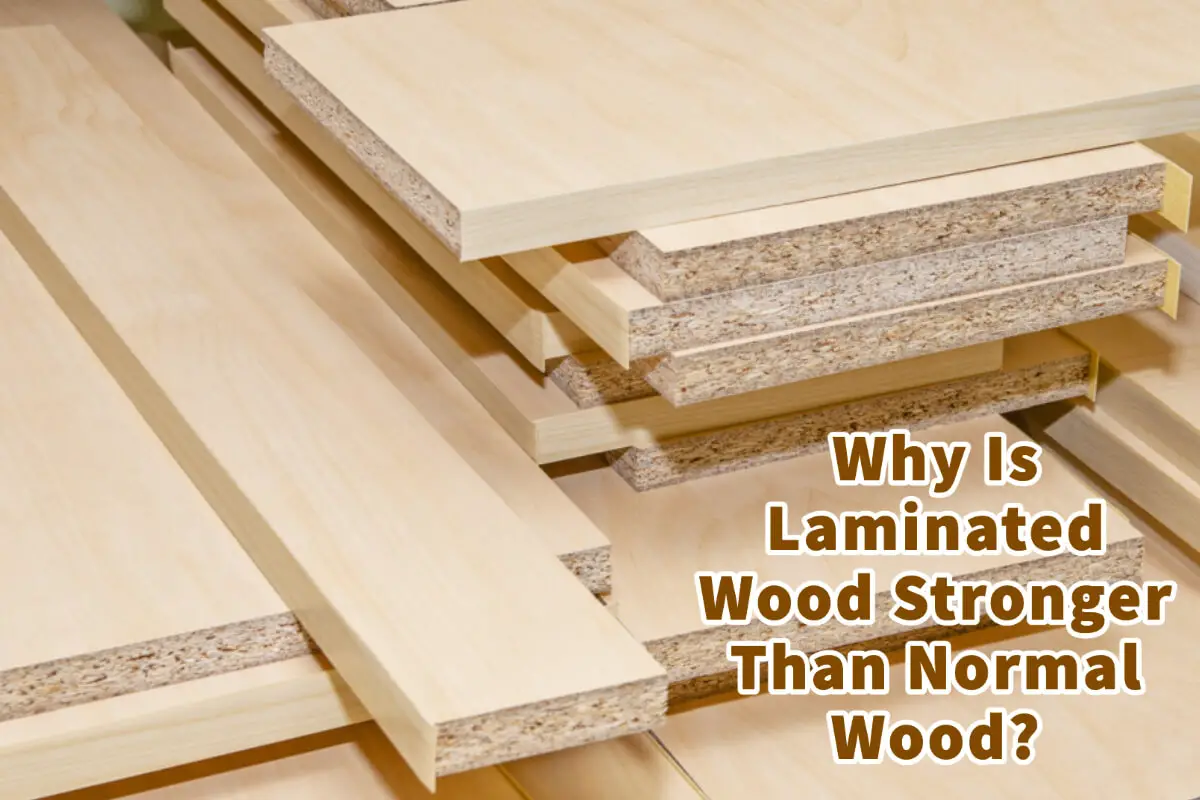Many people want to know why Laminated wood is often stronger than regular solid wood; the answer is quite interesting.
Laminate wood is considered stronger than normal solid wood because the wood is thin sheets of wood glued together. The way that the glue and wood are laminated makes it a stronger alternative to normal solid wood. Some very strong solid wood is considered harder and stronger than laminate wood. The way to test the strength of wood is the Janka test.
Table of Contents
- Why Laminate Wood Is Usually Stronger Than Normal Solid Wood
- The 5 Hardest And Strongest Solid Woods In The World
- Related Content
Why Laminate Wood Is Usually Stronger Than Normal Solid Wood
Laminate wood is usually considered to be stronger than a normal solid word. There are many reasons for this and why it may be stronger.
Normal solid wood is just like the name sounds; it is a piece of solid wood. This piece of wood is chopped down from a tree and then cut into planks or lumber. Often, a piece of solid wood will have rings, knots, and other things that can weaken the wood.
On the other hand, laminate wood is not the same as solid wood. Here are some differences with the laminate wood:
- Laminate wood has been cut into very thin layers, and then the layers are glued together. The layers usually run parallel to each layer.
- The glue that is used to hold together these layers gives extra straight to the laminate wood.
- The laminate wood has glue, and the layers also give it added flexibility in manufacturing.
- Some laminate woods will have added strength by having a coating film over the layers; this can add strength to wood.
Plywood is considered stronger than laminate wood. The reason is that even though plywood is also thin layers glued together, with plywood, the wood grain is alternating directions between each of the layers. This alternating of plywood layers adds strength, making it even stronger than laminate wood.
There Are Some Very Strong Solid Hardwoods
One of the things we must remember about solid wood and laminate wood is that different types of solid wood will have different types of strength, density, and hardness. There are some tough and strong woods. Some of these words may even be stronger than laminate wood or plywood.
Most of these woods are expensive or difficult to find for normal production or manufacturing. Many of these woods are so hard that working with them is very difficult; they are highly difficult to cut, saw, nail or shape.
Janka Wood Hardness Test – How Hard Wood Is And The Janka Tests
Janka Wood Hardness Test is the standard testing for how hard the wood is. The Janka test measures the force required to embed an 11.28 mm diameter steel ball halfway into the wood.
An everyday use of the Janka hardness test is to determine if a species of wood is hard or how hard the wood is. It is used to determine how durable wood is for flooring material.
Because of the Janka Wood hardness test, there are things we have learned about wood and its hardness:
- The hardness of the wood can vary according to the direction of the wood grain, which means that the same wood can have a different hardness.
- Testing on the surface of a plank perpendicular to the grain is said to be the ”side hardness.” The side hardness is sometimes further divided into other areas, such as radial hardness and tangential hardness.
- Testing on the cut surface of a stump is said to be the ”end hardness.”
We learn from this Janka test that some woods are harder than others. And even within the wood type, it can differ as to where and how the test is conducted.
Even though the Janka test is used a lot for the hardwood flooring industry, the Janka test can help us to determine how hard any type of wood is.
The 5 Hardest And Strongest Solid Woods In The World
Regarding the hardest and strongest woods in the world, several kinds of wood stand out as extremely hard; we will look at the wood’s hardness according to their Janka test.

- Australian Buloke – Australian Buloke wood has a Janka test score of 5,060 IBF (Pounds-Force). This wood is so hard and strong that it is also knowns as ironwood; the Australian Buloke is native to Australia.

- Quebracho – Quebracho wood has a Janka test score of 4,570 IBF (Pounds-Force). The Spanish ”quebrar hacha” means axe breaker, which is an appropriate name as the wood is so strong it has probably broken many axes.

- Lignum Vitae – Lignum Vitae has a Janka test score of 4,370 IBF (Pounds-Force). CITES has listed it on the endangered species list.

- Gidgee – Gidgee Wood has a Janka test score of 4,270 IBF (Pound-Force). Another Australian wood that is very hard. Some pieces of this wood are so dark they can be used as an Ebony substitute.

- Snakewood – Snakewood has a Janka test score of 3,300 IBF (Pound-Force). Snakewood continues to be a popular wood as the wood has a snake-like pattern. It is also one of the most expensive woods in the world.
As you can see from this list, there are some very strong and hard words that are growing around the world. But many of these hardwoods are not expected or are on the endangered species list.
Some very hard solid woods may even be stronger than laminate wood.
If you are interested in seeing how Mondoro can be a valuable partner for you for wood furniture products – we would love to talk to you to see how we can help you.
Find out more about how Mondoro can help you create, develop, and manufacture excellent home decor and home furniture products – don’t hesitate to contact me, Anita. Check out my email by clicking here or become a part of our community and join our newsletter by clicking here.
Mondoro gives out a FREE Lookbook to anyone interested. You can receive a copy of our latest Lookbook by clicking here.
Listen to our Podcast called Global Trade Gal. You can find it on all major podcast platforms. Try out to listen to one of our podcasts by clicking here.
Subscribe to our Mondoro Company Limited YouTube Channel filled with great videos and information by clicking here.
Related Content
Hardwood Solids Furniture, What Does The Term Mean?
Hardwood solids can include non-solid woods as engineered woods. Hardwood solids are used in furniture and other industries to classify what kind of wood is used in a product. The terms usually do not classify what type of wood is used.
You can discover more by reading Hardwood Solids Furniture, What Does The Term Mean? by clicking here.
Differences Between Solid Wood, Plywood, Pressboard, And OSB?
Solid wood is wood cut from a tree and made into products; plywood is considered engineered wood. Pressboard is made from paper, including recycled paper. OSB is also known as Oriented Strand Board, and because of its strength is used a lot in roofing, housing, and floors.
You can discover more by reading our blog Differences Between Solid Wood, Plywood, Pressboard, And OSB? by clicking here.
What Is Algum Wood? And Other Biblical Facts
Algum wood was referred to in the Bible as a wood that King Solomon used to build his temple. We know that King Solomon would have used the finest materials to build this temple, so Algum wood was likely a very special and expensive wood.
You can discover more by reading our blog What Is Algum Wood? And Other Biblical Facts by clicking here.


